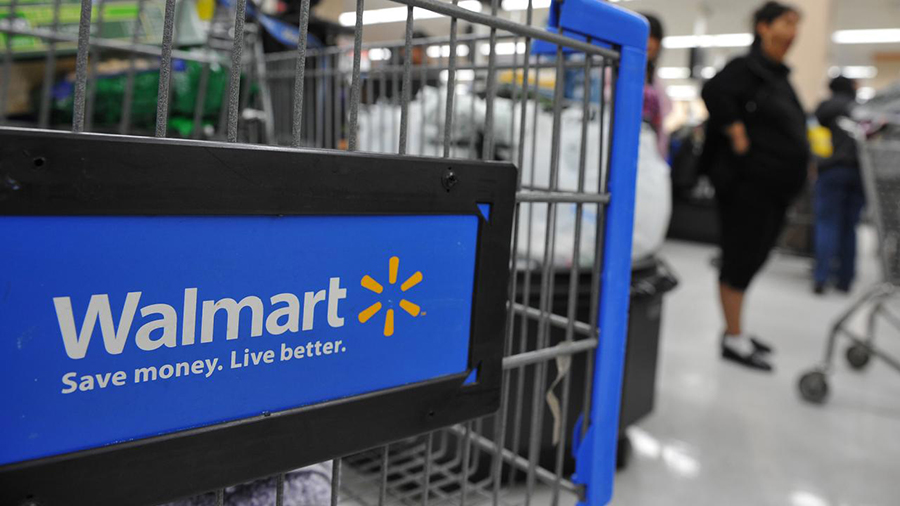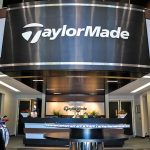Walmart, Inc. lifted its outlook for the year after reporting second-quarter results that handily topped guidance due to strength in the grocery but also a better-than-expected performance in general merchandise. The strong results were a relief for the retail sector following sluggish sales reports from Target and Home Depot although Walmart’s CEO Doug McMillon told analysts household budgets remain under pressure.
“As a global retailer, we see how our customers and members are affected by what’s happening at a macro level, and how that influences their behaviors,” said McMillon on Walmart’s quarterly call. “Jobs, wages and pockets of disinflation are helping our customers, but rising energy prices, resuming student loan payments, higher borrowing costs, and tightening lending standards and a drawdown in excess savings mean that household budgets are still under pressure.”
He said that in the current climate, households are prioritizing value and convenience. McMillon said, “Food is a strength, but we’re also encouraged by our results in general merchandise versus our expectations when we started the quarter.”
In the quarter, consolidated revenue was $161.6 billion, up 5.7 percent, or 5.4 percent in constant currency. Walmart had a projected growth of approximately 4.0 percent. Analysts’ consensus estimate had been $160.27 billion.
Net earnings jumped 53.2 percent to $7.9 million, or $1.84 a share, well above guidance in the range of $1.63 to $1.68. Wall Street’s consensus estimate had been $1.71.
By operating segment, comp sales for Walmart U.S. were ahead 6.4 percent, topping Walmart expectations. Sam’s Club U.S. comps, excluding fuel, were up 5.5 percent and international sales on a currency-neutral basis were up 11 percent, led by double-digit growth at Walmex, its business in Mexico and Central America, and China. Sales at Flipkart, India’s leading e-commerce platform that Walmart owns, were also strong.
Consolidated gross margins increased 50 basis points as Walmart lapped last year’s elevated levels of inventory markdowns and supply chain costs. These tailwinds were partially offset by ongoing category mix pressure, as grocery and health and wellness sales outperformed general merchandise.
Walmart is seen benefiting from its strong position in grocery, which accounts for about half of its sales versus a quarter at Target. Strength in grocery, along with in the health & wellness category, supported by the popularity of some GLP-1 weight-loss drugs, helped drive Walmart U.S.’s 6.4 percent comp gain in the quarter. The gain compared to second-quarter comparable-store declines of 5.4 percent at Target and 2 percent at Home Depot, which warned of slower big-ticket transactions.
Walmart said it gained U.S. market share in grocery in both units and dollars while delivering gross margin rate expansion.
“We see families that are discerning about what they’re spending on,” said McMillon. “They’re setting priorities and spending on the things they care most about.”
John David Rainey, CFO, said on the call that similar to Q1, consumer spending remains “resilient” with a focus on grocery and necessities over discretionary purchases.
“Customers are stretching their dollars further and seeking better value across more categories more often,” said David Rainey. We see grocery staples and in-home meal options being purchased more often. Sales of general merchandise kitchen tools like hand blenders and stand mixers have inflected higher as customers are preparing more food at home. They’re also buying more necessities and focusing on lower-priced items and brands, and customers still want to celebrate key moments.”
He noted that over the last year in the U.S., Walmart has partnered with suppliers to utilize rollbacks and offer select seasonal baskets of goods at the same prices as last year, essentially removing the impact of inflation, as it emphasizes value.
“Customer response has been strong, and sales have exceeded plan for events like Memorial Day, the 4th of July, and our Walmart Plus Week Savings event,” said David Rainey. “We’re taking a similar inflation-fighting approach to Back to School, with a basket of 14 of the most popular classroom essentials for under $13.”
Other highlights in the quarter include continued momentum in e-commerce sales, which were up 24 percent, driven by store-fulfilled pickup and delivery as well as advertising revenue streams. Walmart is also making progress on improving e-commerce profitability, driven by fulfillment efficiencies and better product margins. David Rainey said, “We’re leveraging our stores to fulfill more than 50 percent of digital orders and activating our local delivery networks to get product to customers faster at lower cost.”
Going forward, McMillon was particularly encouraged that Walmart saw a modest sequential improvement in general merchandise, ahead of expectations. He said, “We still expect food, consumables and health and wellness, primarily due to the popularity of some GLP-1 drugs, to grow as a percent of the total in the back half. But the trends we see in general merchandise sales make us feel more optimistic about those categories in the back half of the year.”
Another positive sign was that back-to-school sales are running ahead of plan so far. The CEO said, “Typically when back-to-school is strong, it bodes well for what happens with Halloween and Christmas and GM (general merchandise) in the back half.”
Walmart U.S. Segment Sees 6.4 Percent Same-Store Growth
At its Walmart U.S. segment, the 6.4 percent sales comp included a high single-digit increase in grocery and a high-teens increase in health and wellness. Although general merchandise sales declined low single digits versus last year, the results were 300 basis points better than Q1, aided by outperformance from early Back to School shopping in its Walmart Plus savings event.
The Walmart U.S. segment saw a 240-basis point shift in sales mix from general merchandise to grocery and health and wellness in Q2. Grocery inflation moderated more than 400 basis points from Q1 levels and more than 700 basis points year-over-year to a high single-digit increase versus higher levels from last year. On a two-year stack, grocery inflation remained at over 20 percent.
“We’re encouraged by the growth in units sold, particularly in food categories where disinflation is more pronounced, such as fresh meats, seafood and eggs,” said David Rainey. “In addition, private brand sales in grocery were up more than 9 percent, with penetration up nearly 40 basis points in Q2 and up more than 170 basis points on the two-year stack.”
Growth in e-commerce in the Walmart U.S. segment was 24 percent, with strength in pickup & delivery and advertising revenue streams. Walmart Connect advertising sales grew 36 percent. Overall revenues in the Walmart U.S. segment grew 5.4 percent to $110.9 billion from $105.1 billion a year ago.
Operating income in the Walmart U.S. segment improved 7.6 percent to $6.1 billion from $5.7 billion. Lower markdowns and supply chain costs resulted in a gross margin rate increase of 40 basis points, despite ongoing pressure from category mix shifts. The negative impact to margin mix from outsized growth in branded drugs accelerated in Q2.
Inventory at the Walmart U.S. segment declined 8 percent at the quarter’s end with higher in-stock levels.
Walmart International Delivers 11 Percent Currency-Neutral Growth
In the Walmart International segment, sales in the second quarter gained 13.3 percent to $27.6 billion. Sales on a currency-neutral basis grew 11.0 percent. Operating income advanced 14.1 percent to $1.2 billion and gained 2.2 percent on a currency-neutral basis.
David Rainey said, “Similar to the U.S., customers are still pressured by elevated inflation with spend over indexing towards food and consumables. We’re seeing higher private brand penetration across markets as customers globally look for a combination of value and quality.”
The strong gains internationally on a currency-neutral basis were led by 10 percent growth at Walmex, led by strength in its Bodega stores, Sam’s Club and e-commerce as well as 22 percent growth in China, led by strength from Sam’s Club and e-commerce.
In India, Flipkart delivered strong sales growth as the core business continues to perform well. Said David Rainey, “The team continues to focus on expanding the ecosystem of products and services, including advertising, travel and healthcare, and on delivering continued contribution profit improvement. Flipkart’s consistent progress and performance reinforces our confidence in the long-term value of this business.”
Growth in e-commerce sales internationally was 26 percent with strength in store-fulfillment.
Gross margins in the Walmart International segment declined 37 basis points over last year on changes in the format and channel mix. Advertising was up nearly 40 percent. Operating expense leverage of 129 basis points on strong growth in net sales, driving fixed cost leverage. The year-ago period was boosted by a $200 million one-time insurance benefit in Chile.
Sam’s Club U.S. Sales, Ex-Fuel, Expand 5.3 Percent
Sam’s Club U.S. sales eased 0.3 percent in the quarter to $21.8 billion although sales excluding fuel gained 5.3 percent. Operating income gained 22.0 percent to $500 million.
Comparable sales excluding fuel gained 5.5 percent on top of a 9.5 percent climb a year ago. The gains reflect solid unit growth and e-commerce up 18 percent. In Q2, utilization of Scan and Go increased 570 basis points, and curbside pickup saw double-digit growth
Said David Rainey, “Similar to Walmart, sales strength at Sam’s was led by grocery and healthcare categories as the members focused on value and essentials. While discretionary categories were pressured overall, items with compelling price and quality and strong value to market are driving sales.”
Sam’s Club also benefited from strong growth in membership income, up 7.0 percent, with continued strength in Plus member growth and renewals. Membership count increased mid-single-digits with Plus penetration up 130 basis points vs. last year
Guidance
For the third quarter, Walmart expects consolidated net sales on a currency-neutral basis to increase by approximately 3.0 percent. Consolidated operating income on a currency-neutral basis is expected to increase by approximately 1.0 percent. Adjusted EPS is expected to range between $1.45 to $1.50.
For the full year, the updated guidance calls for:
- Consolidated net sales on a currency-neutral basis to increase approximately 4.0 percent to 4.5 percent (Prior guidance, Increase approximately 3.5 percent);
- Consolidated operating income on a currency-neutral basis to increase approximately 7.0 percent-7.5 percent, including an expected 30 basis points tailwind from LIFO (Prior guidance, increase approximately 4.0 percent-4.5 percent, including an expected 100 basis points impact from LIFO);
- Interest, net increase approximately $500 million v. LY (Prior guidance, increase approximately $600 million v. LY);
- Effective tax rate at 26.5 percent (Unchanged from prior guidance);
- Non-controlling interest representing an approximately $0.26 headwind to EPS (Prior guidance, approximately $0.20 headwind to EPS v. LY);
- Adjusted EPS $6.36 to $6.46, including an expected $0.05 impact from LIFO (Prior guidance, $6.10 to $6.20, including an expected $0.14 impact from LIFO); and
- Capital expenditures expected to be flat to up slightly v. LY, (Unchanged from prior guidance).
Photo courtesy Walmart
















